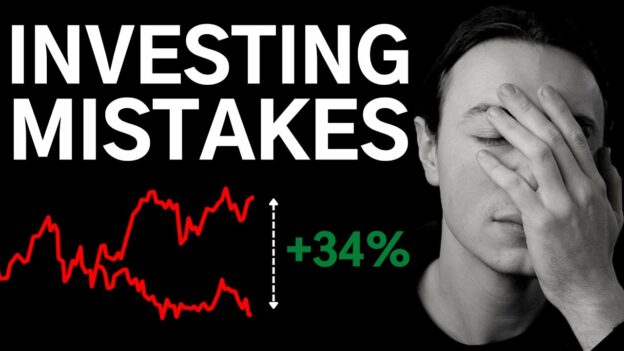Exchange-traded funds (ETFs) are often seen as the perfect investment vehicle for beginners. They offer instant diversification, relatively low costs, and easy access to global markets.
From U.S. investors buying broad market funds like the S&P 500 ETF to Europeans holding global all-cap ETFs, these products have become a go-to solution for building wealth.
However, the apparent simplicity of ETFs can be misleading. New investors sometimes assume that “buying any ETF is safe,” only to realize later that they purchased the wrong type of fund, ignored hidden costs, or built an unbalanced portfolio. These mistakes don’t just reduce returns—they can set back long-term financial goals.
Here are the most common ETF mistakes beginner investors make, along with guidance on how to avoid them.
Contents
- 1 1. Treating All ETFs as the Same
- 2 2. Overlooking Expense Ratios
- 3 3. Buying Too Many ETFs
- 4 4. Ignoring Liquidity and Spreads
- 5 5. Misusing Leveraged and Inverse ETFs
- 6 6. Chasing Recent Performance
- 7 7. Ignoring Tax Rules
- 8 8. Forgetting Asset Allocation
- 9 9. Not Rebalancing the Portfolio
- 10 10. Believing ETFs Eliminate All Risk
- 11 FAQs
- 12 Conclusion
- 13 Related Posts
1. Treating All ETFs as the Same
Many beginners assume all ETFs are alike, when in fact they cover a vast range of asset classes and strategies:
-
Broad market index ETFs
-
Bond ETFs for stability
-
Sector ETFs focusing on industries like technology or healthcare
-
Leveraged and inverse ETFs designed for short-term traders
Mistake: Buying an ETF without understanding what it actually tracks.
Solution: Always check the ETF’s fact sheet to see which index or assets it follows.
2. Overlooking Expense Ratios
One of the biggest advantages of ETFs is their low cost, but fees still vary widely. Broad market ETFs may charge as little as 0.03% annually, while niche or actively managed ETFs can cost more than 1%.
Mistake: Ignoring small differences in expense ratios. Over 20–30 years, these fees can erode thousands in returns.
Solution: Prioritize low-cost ETFs unless there’s a strong reason to pay higher fees.
3. Buying Too Many ETFs
ETFs provide diversification, but some beginners buy 10–15 funds, many of which overlap in holdings. For example, owning both a global ETF and a U.S. ETF often results in duplicate exposure.
Mistake: Thinking “more ETFs = more diversification.”
Solution: Keep it simple—3 to 5 ETFs are usually enough to cover global equities, bonds, and maybe one thematic fund.
4. Ignoring Liquidity and Spreads
Not all ETFs trade with high volume. Illiquid ETFs may have wide bid-ask spreads, meaning you pay more when buying and get less when selling.
Mistake: Choosing low-volume ETFs without checking liquidity.
Solution: Stick to ETFs with consistent trading activity and narrower spreads, especially when starting out.
5. Misusing Leveraged and Inverse ETFs
Leveraged (2x, 3x) and inverse ETFs are designed for short-term trading, not long-term investing. They reset daily and can drift far from the index over time.
Mistake: Holding leveraged ETFs long-term, expecting them to deliver multiples of index returns.
Solution: Avoid these products unless you are an experienced trader.
6. Chasing Recent Performance
Beginners often buy ETFs after a big rally, such as technology or clean energy ETFs following hype cycles. Unfortunately, this often leads to buying high and selling low.
Mistake: Choosing ETFs based on short-term gains.
Solution: Focus on long-term fundamentals and consistent investing strategies, not fads.
7. Ignoring Tax Rules
ETF taxation depends on where you live. In some regions, dividends are taxed annually. In others, accumulating ETFs reinvest dividends automatically.
Mistake: Assuming all ETFs are taxed the same way—or not planning for taxes at all.
Solution: Learn the tax rules in your country and consider tax-advantaged accounts when available.
8. Forgetting Asset Allocation
Some beginners put all their money in one ETF, usually an equity fund, without balancing risk. While equities offer growth, they also bring volatility.
Mistake: Building an unbalanced portfolio with only one type of ETF.
Solution: Use a mix of equity, bond, and possibly real estate or commodity ETFs for balance.
9. Not Rebalancing the Portfolio
Over time, one ETF may grow faster than others, creating an overweight position. Without rebalancing, the portfolio may become riskier than intended.
Mistake: Letting market moves distort your portfolio.
Solution: Rebalance annually or semi-annually to stay aligned with your target allocation.
10. Believing ETFs Eliminate All Risk
ETFs reduce company-specific risk but do not shield you from market downturns. If the overall market falls, your ETF will fall too.
Mistake: Thinking ETFs are “risk-free.”
Solution: Understand that ETFs are safer than individual stocks but still exposed to market volatility.
FAQs
Q1: Can ETFs lose value?
Yes, ETFs track markets, and if the market falls, so will the ETF.
Q2: How many ETFs do I need as a beginner?
Usually 3–5 well-chosen ETFs are enough for global diversification.
Q3: Do ETFs always pay dividends?
No. Some ETFs distribute dividends, while others automatically reinvest them.
Q4: Should beginners choose ETFs or stocks?
ETFs are generally safer and easier to manage, while stocks require more research.
Q5: Is dollar-cost averaging a good strategy with ETFs?
Yes, investing monthly helps smooth out market volatility.
Conclusion
ETFs can be one of the most effective tools for building long-term wealth, but beginners often stumble by treating them as one-size-fits-all investments. The most common mistakes—like buying too many ETFs, chasing performance, or misusing leveraged funds—stem from lack of research and planning.
Recommendations for beginners:
- Start simple with 3–5 core ETFs covering global equities and bonds.
- Keep costs low by focusing on funds with minimal expense ratios.
- Think long-term, avoiding hype-driven or short-term products.
- Rebalance regularly to maintain your chosen risk profile.
- Educate yourself continuously, reading fund fact sheets and learning tax rules in your country.
By avoiding these common pitfalls and following a disciplined approach, ETFs can provide steady growth, reduced risk, and a clear path toward financial independence.
